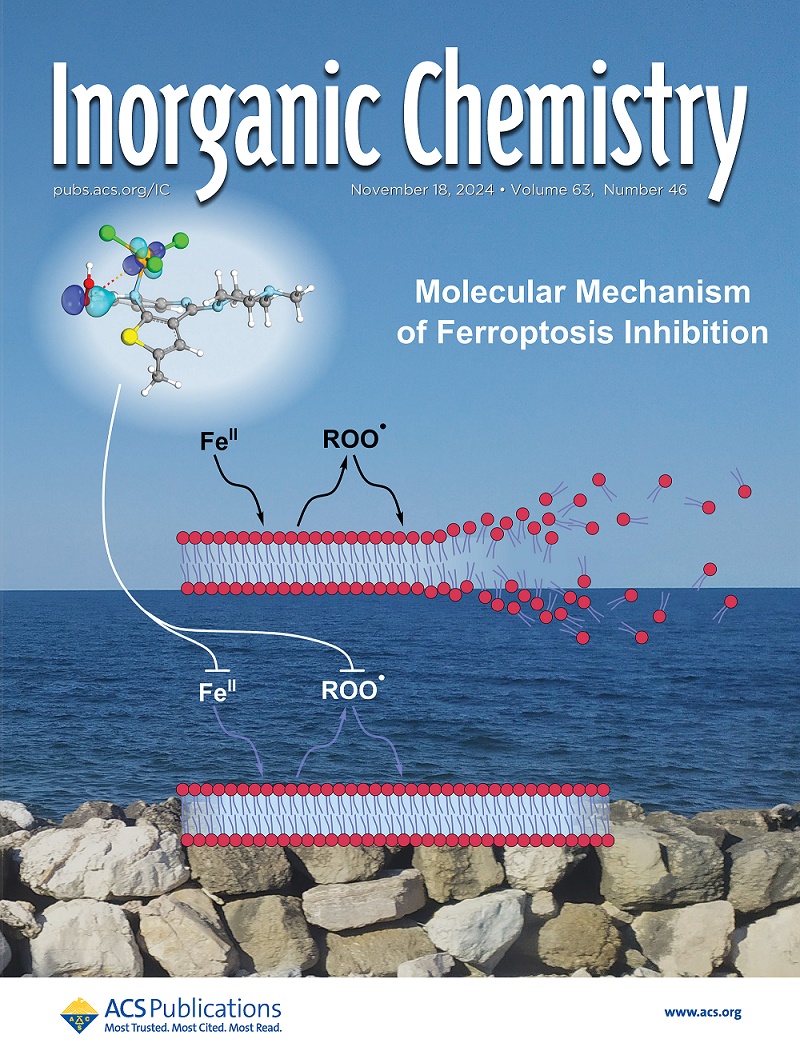Cluster Expansion of Luminescent Digold(I) and Disilver(I) Phosphine-Phosphide Oxide Complexes.
IF 4.7
2区 化学
Q1 CHEMISTRY, INORGANIC & NUCLEAR
引用次数: 0
Abstract
Deprotonation of a diphosphine-secondary phosphine oxide ligand (o-Ph2PC6H4)2P(O)H (HP3O) affords disilver(I) and digold(I) complexes [M2(P3O)2], M = Ag (1) and Au (2). These compounds readily add coordinatively unsaturated AuX fragments (X = C6F5, SPh) by means of metallophilic interactions supported by bridging ligands. The extension of the metal core produces a series of penta- to octanuclear clusters [{M2(P3O)2}(AuX)n] 3-7 (n = 3-6), the structures of which depend on the X group, the nature of the constituting metals, and P = O···HR hydrogen bonding. The newly synthesized clusters demonstrate moderate to intense luminescence as microcrystalline powders, predominantly originating from the triplet excited state and covering a range of wavelengths from 517 to 585 nm. Complexes 3-5 containing perfluorophenyl ligands exhibit high photoemission quantum yields under ambient conditions of up to 0.76 in combination with a relatively short lifetime of 0.98 μs for the pentagold cluster [Au2(P3O)2(AuC6F5)3] (4). The results illustrate a feasible approach for the preparation of nonionic d10 coinage metal bright luminophores, derived from a hybrid P{OP-}P scaffold.发光二金(I)和二银(I)磷化氢-磷化物氧化物配合物的团簇扩展。
二膦-氧化二膦配体(O - ph2pc6h4)2P(O)H (hp30o)的脱质子作用得到银(I)和二金(I)配合物[M2(p30o)2], M = Ag(1)和Au(2)。这些化合物很容易通过桥接配体支持的亲金属相互作用加入配位不饱和的AuX片段(X = C6F5, SPh)。金属芯的延伸产生了一系列五核到八核簇[{M2(p30)2}(AuX)n] 3-7 (n = 3-6),其结构取决于X基团、构成金属的性质和P = O···HR氢键。新合成的团簇表现出中等到强烈的微晶粉末发光,主要来自三重态激发态,波长范围从517到585 nm。含全氟苯基配体的配合物3-5在环境条件下表现出高达0.76的高光发射量子产率,而五金簇[Au2(p30)2(AuC6F5)3]的寿命相对较短,为0.98 μs(4)。该结果为制备非离子型d10金属发光团提供了一种可行的方法,该方法来源于P{OP-}P杂化支架。
本文章由计算机程序翻译,如有差异,请以英文原文为准。
求助全文
约1分钟内获得全文
求助全文
来源期刊

Inorganic Chemistry
化学-无机化学与核化学
CiteScore
7.60
自引率
13.00%
发文量
1960
审稿时长
1.9 months
期刊介绍:
Inorganic Chemistry publishes fundamental studies in all phases of inorganic chemistry. Coverage includes experimental and theoretical reports on quantitative studies of structure and thermodynamics, kinetics, mechanisms of inorganic reactions, bioinorganic chemistry, and relevant aspects of organometallic chemistry, solid-state phenomena, and chemical bonding theory. Emphasis is placed on the synthesis, structure, thermodynamics, reactivity, spectroscopy, and bonding properties of significant new and known compounds.
 求助内容:
求助内容: 应助结果提醒方式:
应助结果提醒方式:


